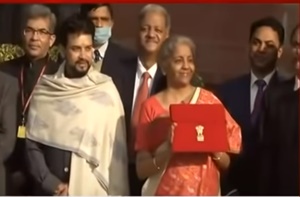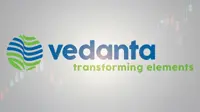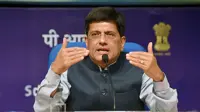Presenting the first ever digital Union Budget, minister of finance and corporate affairs Nirmala Sitharaman stated that India’s fight against Covid-19 continues into 2021 and that this moment in history, when the political, economic, and strategic relations in the post-Covid world are changing, is the dawn of a new era – one in which India is well-poised to truly be the land of promise and hope.

The finance minister who had promised a "never before" budget not seen in a hundred years to repair the economic devastation caused by a once-in-a-lifetime pandemic, which rendered millions jobless, shuttered scores of small businesses and snuffed the spending power out of the bottom of pyramid populace, said the budget aims at well-being – both fiscal and physical – of the nation and its people.
She said Budget 2021 is built on the six pillars of health and well-being, physical and financial capital and infrastructure, inclusive development for aspirational India, reinvigorating human capital, innovation and R&D, minimum government and maximum governance.
Sitharaman, who began unveiling the Union Budget 2021 at 11 am amid heckling by opposition members in Parliament, proposed a more than doubling of government spending on health and wellbeing to Rs2,23,846 crore in 2021-22 against Rs94,452 crore in the current fiscal.
"Only three times has the budget followed a contraction in the economy. This time, unlike before, the situation is due to a global pandemic. Budget 2021-22 provides every opportunity for the economy to capture the pace and grow sustainably," she said.
The government stretched its resources for the benefit of the poorest of the poor. The PM Garib Kalyan Yojana, the three Aatma Nirbhar Bharat packages and subsequent announcements were like five mini-budgets in themselves, she added.
Sitharaman said India already has 2 vaccines available and has begun safeguarding not only her own citizens against the scourge of Covd-19 but also those of 100 or more countries.
The FM's task at hand is unenviable, as many expect the government to support the pandemic-hit economy through increased public spending even as private investments are struggling and the government’s fiscal deficit is ballooning,
Yet, the finance minister provided relief to senior citizens in filing of income tax returns, reduced time limit for income tax proceedings announced setting up of the Dispute Resolution Committee, faceless ITAT, relaxation to NRIs, increase in exemption limit from audit and relief for dividend income.
She also announced steps to attract foreign investment into infrastructure, relief to affordable housing and rental housing, tax incentives to IFSC, relief to small charitable trusts, and steps for incentivising start-ups in the country.
Finance minister said that for an economy aiming to be $5 trillion strong, its manufacturing sector has to grow in double digits on a sustained basis. “Our manufacturing companies need to become an integral part of global supply chains, possess core competence and cutting-edge technology.”
Towards this end, the government has already announced PLI schemes to create manufacturing global champions for an AatmaNirbhar Bharat in 13 sectors. For this, the government has committed nearly Rs1.97 lakh crore in the next 5 years starting FY 2021-22. This initiative will help bring scale and size in key sectors, create and nurture global champions and provide jobs to our youth, she added.
On the infrastructure front, Sitharaman said that infrastructure needs long term debt financing. A professionally managed Development Financial Institution is necessary to act as a provider, enabler and catalyst for infrastructure finance ing. Accordingly, a bill to set up a DFI will be introduced. Government has provided a sum of Rs20,000 crore to capitalise this institution and the ambition is to have a lending portfolio of at least Rs5 lakh crore for this DFI in three years time.
The finance minister said in the AtmaNirbhar Package, she had announced to come out with a policy of strategic disinvestment of public sector enterprises and said that the government has approved the said policy. The policy provides a clear roadmap for disinvestment in all non-strategic and strategic sectors.
Government has kept four areas that are strategic where bare minimum CPSEs will be maintained and the rest privatized. In the non-strategic sectors, CPSEs will be privatised, or otherwise closed. She said that to fast forward the disinvestment policy, NITI Aayog will work out on the next list of central public sector companies that would be taken up for strategic disinvestment. Government has estimated Rs1,75,000 crore as receipts from disinvestment in BE 2020-21.
Monetising operating public infrastructure assets is a very important financing option for new infrastructure construction. A “National Monetisation Pipeline” of potential brownfield infrastructure assets will be launched. An Asset Monetisation dashboard will also be created for tracking the progress and to provide visibility to investors, she said.
Other core infrastructure assets that will be rolled out under the Asset Monetisation Programme are: NHAI’s operational toll roads, transmission assets of PGCI, oil and gas pipelines of GAIL, IOCL and HPCL; AAI airports in Tier II and III cities, other railway infrastructure assets, Warehousing assets of CPSEs such as Central Warehousing Corporation and NAFED among others and sports stadiums.
She also proposed to amend the Insurance Act, 1938 to increase the permissible FDI limit from 49% to 74% and allow foreign ownership and control with safeguards. Under the new structure, the majority of Directors on the Board and key management persons would be resident Indians, with at least 50% of Directors being Independent Directors, and specified percentage of profits being retained as general reserve.
Finance minister announced that more than 13,000 km length of roads, at a cost of Rs3.3 lakh crore, has already been awarded under the Rs5.35 lakh crore Bharatmala Pariyojana project, of which 3,800 km have been constructed. By March 2022, the government would be awarding another 8,500 km and complete an additional 11,000 km of national highway corridors. To further augment road infrastructure, more economic corridors are also being planned. She also provided an enhanced outlay of Rs1,18,101 lakh crore for the ministry of road transport and highways, of which Rs1,08,230 crore is for capital, the highest ever.
Budget also provided a record sum of Rs1,10,055 crore for Railways, of which Rs1,07,100 crore is for capital expenditure.
Indian Railways has prepared a National Rail Plan for India – 2030. The Plan is to create a ‘future ready’ Railway system by 2030. “Bringing down the logistic costs for our industry is at the core of our strategy to enable ‘Make in India’. It is expected that Western Dedicated Freight Corridor (DFC) and Eastern DFC will be commissioned by June 2022,” the finance minister stated.
Government, she said, will work towards raising the share of public transport in urban areas through expansion of metro rail network and augmentation of city bus service. A new scheme will be launched at a cost of Rs18,000 crore to support augmentation of public bus transport services, she added.
A total of 702 km of conventional metro is operational and another 1,016 km of metro and RRTS is under construction in 27 cities. Two new technologies, ie, ‘MetroLite’ and ‘MetroNeo’ will be deployed to provide metro rail systems at much lesser cost with same experience, convenience and safety in Tier-2 cities and peripheral areas of Tier-1 cities, Sitaraman stated.
The finance minister proposed a public-private partnership model for major ports, with the leasing out of port operations and services on their own to a model where a private partner will manage it for them. For the purpose the budget proposes to offer more than Rs2,000 crore by major ports on public-private partnership (PPP) model in FY21-22.
A scheme to promote flagging of merchant ships in India will be launched by providing subsidy support to Indian shipping companies in global tenders floated by ministries and CPSEs. An amount of Rs1,624 crore will be provided over 5 years. This initiative will enable greater training and employment opportunities for Indian seafarers besides enhancing the share of Indian companies in global shipping, she added.























